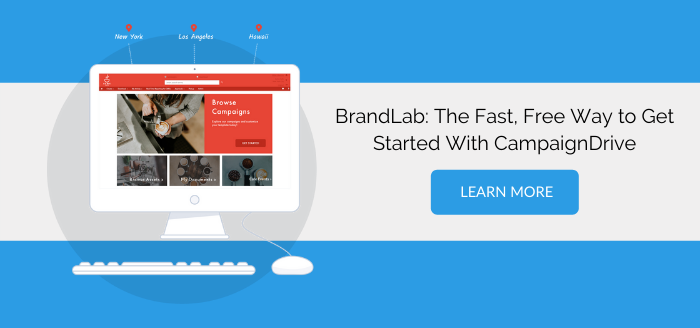The digital asset management market is growing at a rate of 18.4% each year. It’s steadily becoming one of the most important resources for businesses in 2022.
Creativity has become an irreplaceable component of business productivity. It drives sales, boosts engagement with clients, and improves the overall appeal of your brand identity—which has become a crucial aspect of current-day business success.
However, the creatives on your team need structural support to produce high-quality work.
This is where DAM comes in.
For company creatives and designers to perform well, their digital assets need to be centralized in an accessible, organized digital location. This allows for improved productivity, efficiency, and streamlined workplace innovation.
Here’s how to set one up.
First Things First: What Is Digital Asset Management (DAM)?
Digital Asset Management (DAM) is any software system designed to store, organize, and centralize digital assets for professionals. Those digital assets include a wide variety of content, such as:
- Infographics
- Images
- Videos
- Fonts
- Slides
- Animations
- Social media posts
- Website material
Any company that has an active online presence uses digital assets to build a brand identity, create advertisements, and contextualize digital interactions with the public. This can also include any intellectual property a business might own, such as digital themes, original color palettes, or visual concepts that create brand consistency. In short, anything a team of designers would be responsible for producing.
Most businesses utilize a cloud storage system to hold their digital assets in a safe, accessible place. But there are better, more productive ways to approach this need. And it’s called DAM.
How Does A DAM System Benefit Designers And Creative Team Members?
DAM systems allow creatives to access, edit, and produce work in an organized, optimally efficient environment. This allows employees to communicate in one centralized space and makes collaboration efforts more succinct.
Now, the argument for cloud-based systems is strong. But not as strong as DAM. Clouds are less secure and therefore easier for hackers to penetrate. Plus, they often lack the additional tools and features that DAM systems make a point of providing.
Here are some more benefits of installing DAM software for the creatives in your team:
1. Streamline creative workflow
Digital assets may go through a variety of developmental stages, each of which may require team or client approval. Within a DAM system, all parties have access to the status of each asset, and can quickly navigate their way through editing, revisions, and giving or receiving feedback.
This element of accessibility allows creatives to work faster, more flexibly, and more efficiently with both team members and potential clients.
2. Improve internal collaboration
The more centralized your digital assets are, the easier it becomes for employees to collaborate with one another. Typically, each member of a creative team has a different role to play in the production of different digital assets, and being able to access them in one place improves team communication.
Collaboration and communication are both extremely important aspects of creativity and design, which is exactly what systems like DAM have been created to facilitate.
3. Keep assets secure
Yes, you can use a cloud system. But it won’t be nearly as secure as what a DAM can provide. Data security is extremely important for any business in 2022, especially those that deal with large quantities of digital property.
DAM systems have single-gateway hosting, encrypted logins, and Security Assertion Markup Language (SAML) for tighter protection over your assets.
4. Integrate and centralize existing software
In the likely scenario that your creative team uses design software such as Adobe Creative Cloud, Photoshop, Illustrator, InDesign, or even Canva, a DAM system can integrate them all into one centralized space, eliminating the need to toggle back and forth between different programs.
Without a DAM system, cross-production over multiple channels can be frustrating and time-consuming, which is what makes this element of the software so valuable to design teams.
5. Reduce time wastage
According to a recent survey from Brandfolder, 48% of respondents claim that distributing and searching for digital assets inhibits their productivity. DAM systems enable peak organizational storage and allow parties to sort, search, and manage files much faster and more efficiently.
The less time creatives spend on searching, organizing, and handling digital assets, the more time they can spend on producing high-quality work.
6. Automate tiresome tasks
Automation is the key to workplace optimization, and DAM includes it as part of its package. DAM software is designed to be intelligent and autonomous, allowing users to expedite certain tedious tasks (such as file tagging, extracting metadata, and list-making).
How To Set Up A DAM System
Due to the rapidly growing demand, there are plenty of high-quality DAM software systems available for installation online. Most of them entail paying a monthly subscription fee. But the level of value your creatives can extract out of them is well worth the cost.
The more people you have on your team—and the more clients you have – the more you will need to pay for software features. But don’t worry, when it comes to these efficiency-driven software platforms, the more you pay, the more value you get out.
The Bottom Line: Asset Management Drives Collaboration & Productivity
We are currently entering a new era of creative talent. Design roles have become indispensable to businesses, both big and small. This has led to a rising demand for systems and services that can streamline creative workflow and facilitate a more innovative approach to work.
DAM systems boost productivity, reduce time wastage, and provide a more secure environment for creatives to collaborate. Installing DAM is an investment that you, your company, and your design team can benefit from for years to come.
The best way to get comfortable with a DAM is to start with a small experiment. To get started, we recommend taking advantage of BrandLab, our free trial of CampaignDrive.






